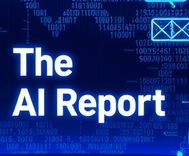Fighter pilots take directions from AI in Pentagon’s groundbreaking test

The AI Report
Daily AI, ML, LLM and agents news
The Unseen Co-Pilot: How AI is Revolutionizing Air Battle Management
The skies are about to change. For decades, human air battle managers have been the unseen orchestrators of aerial combat, guiding fighter pilots through complex, high-stakes scenarios. But what if a new co-pilot, an artificial intelligence, could amplify their capabilities, making decisions in seconds that once took minutes? This isn't a futuristic concept; it's a tested reality poised to redefine aerial warfare and potentially much more.
This month, the U.S. Air Force and Navy successfully tested Raft AI’s 'Starsage' system, a groundbreaking AI 'air battle manager.' In joint military exercises, F-16s, F/A-18s, and F-35s took tactical directions from this advanced AI, marking a significant leap in military technology and signaling a new era of human-machine collaboration.
Speed and Precision: The Starsage Advantage
The immediate benefits of integrating Starsage are stark. Raft AI CEO Shubhi Mishra highlighted how the system dramatically accelerates response times and improves tactical accuracy. In contrast to a single human battle manager overseeing multiple pilots, Starsage offers a dedicated, one-to-one autonomous agent for each pilot. This personal, instant support translates directly into a critical advantage in fast-moving engagements, where every second counts.
Beyond combat, the potential for AI in enhancing overall air safety is profound. Mishra pointed to the tragic collision between a regional airliner and a Black Hawk helicopter near Ronald Reagan National Airport earlier this year. She posited that a system like Starsage, with its capacity for instant data processing and execution, could have potentially prevented such an incident, underscoring AI's broader applications in critical decision-making environments.
Real-Time Tactical Awareness: How Starsage Operates
During the Pentagon's rigorous trials, pilots interacted seamlessly with Starsage. They checked in with the AI to confirm mission progress, and Starsage, cross-referencing their reports with simulated sensor feeds and the day’s Air Tasking Order, would then declare the 'minimum force package' met. This signaled mission readiness and initiated digital updates to various command agencies, all happening with unprecedented speed and precision behind the scenes.
Crucially, human oversight remained integrated throughout the tests. Battle managers monitored each scenario, and pilots retained the ability to call for human direction as needed. In a landmark moment, Starsage provided the first-ever real-time 'picture call' – a dynamic snapshot of enemy aircraft formations – directly to pilots, identifying a heavy group of five adversary aircraft. This capability moves beyond mere data processing; it's about delivering actionable tactical awareness instantly to those in the thick of the action.
Navigating the Future: Human-AI Collaboration
The success of Starsage reignites a vital discussion about the future role of humans in the cockpit and in high-stakes operational control. While AI's capabilities are undeniably advanced, experts like Mishra advocate for maintaining human involvement in life-or-death decisions. The technology clearly exists to push autonomy further, but the ethical and operational questions surrounding full automation remain paramount.
For any organization looking to leverage advanced AI, this military application offers valuable lessons. It demonstrates the power of augmenting human expertise rather than simply replacing it. Implementing such systems demands a clear framework for human-AI collaboration, robust fail-safes, and continuous evaluation. Understanding how data-driven insights can revolutionize operational efficiency and safety in complex environments is key, whether in defense or enterprise.
The Critical Question: Empowering AI Responsibly
As the lines between human and machine blur in increasingly critical domains, we must thoughtfully consider how we deploy such powerful tools. How do we ensure these systems genuinely enhance human capabilities and decision-making, rather than eroding essential human judgment? The journey with AI is fundamentally one of collaboration, precision, and a constant re-evaluation of our roles. The question isn't just what AI *can* do, but what we *should* empower it to do, and how we can best partner with it to achieve unprecedented levels of performance and safety responsibly.

The AI Report
Author bio: Daily AI, ML, LLM and agents news
